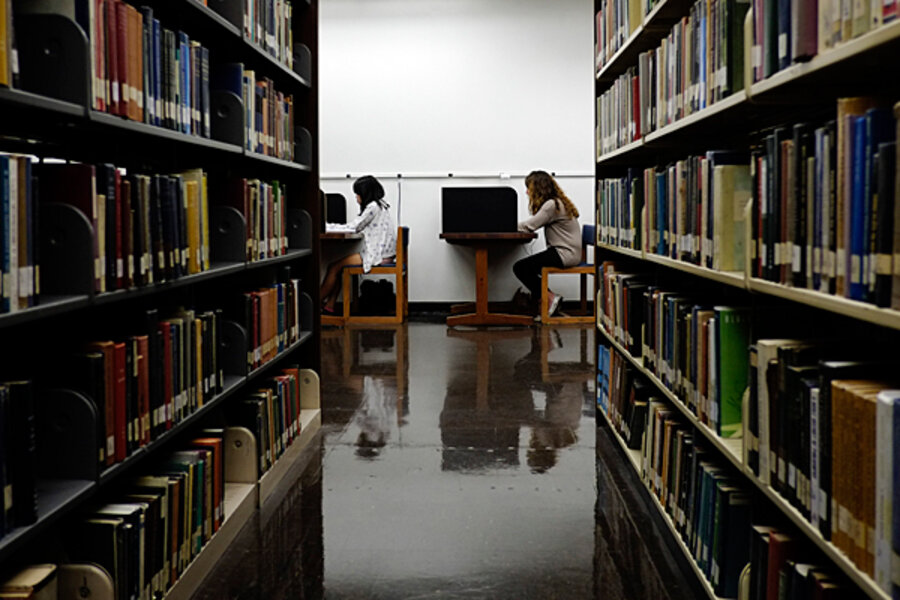Bottom line on college costs: Students, families are paying more
Loading...
The astronomical rise in college tuition slowed a bit this year. But when it comes to net price – what students actually pay after grants and tax benefits are taken into account – the pinch is getting worse for students and their families.
The average net price for public four-year colleges is up for the second year in a row, and it’s up at nonprofit private colleges and community colleges as well, after three years of decline, according to the College Board’s Trends in College Pricing 2012 report.
The buffer of increased grants and other aid isn’t keeping pace.
“We’ve had a very strong period of support from the federal government that appears to be coming to a close, and that’s worrisome going forward,” says Terry Hartle, senior vice president of government and public affairs at the American Council on Education in Washington, which represents colleges and universities.
Unprecedented growth in federal Pell Grants for college students in recent years will be difficult to sustain, and a series of college-related tax credits are due to expire unless Congress acts to continue them, Mr. Hartle says.
Here are some of the key figures on net price in the College Board report:
Public four-year institutions. Average net tuition and fees in 2012-13: $2,910, up from $2,620 last year. Including room and board, the full net price this year is $12,110.
Public two-year institutions. Average net tuition and fees in 2012-13: -$1,220. That means student aid covers all tuition and fees and $1,220 of other expenses. The year before, student aid covered $1,350 of extra expenses. Once room and board are taken into account, the full net price this year is $6,200.
Private nonprofit four-year institutions. Average net tuition and fees: $13,380, up from $12,600 last year. With room and board, total net price this year is $23,840.
The growth of published tuition and fees (the “sticker” price) has slowed, but it is still a concern to college affordability advocates. About a third of students at public universities pay the full sticker price, for instance. For 2012-13, published tuition and fees for in-state students at public universities were up 4.8 percent, to $8,655. Tuition and fees at private four-years rose 4.2 percent, to $29,056.
State appropriations per full-time student declined 25 percent between 2006-07 and 2011-12, according to the report.
Continued budget cuts in states are a harbinger of more tuition increases to come at public colleges and universities.
In response to rising prices, more students and families are taking on more debt, including a recent upturn in private loans, which is “significant given that’s one of the riskiest ways to pay for college,” says Pauline Abernathy, vice president of The Institute for College Access & Success.
But a wide variety of colleges and price points are available to most students, so they can find the right fit, Ms. Abernathy says. “We are seeing signs that students and families are being more sensitive to price,” and turning to tools such a net-price calculators, now mandated as a tool on college websites, to help estimate what an individual’s cost would be after financial aid is granted.








